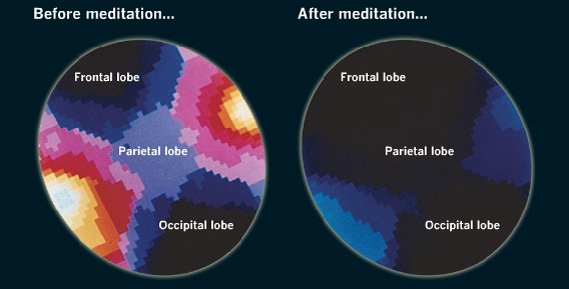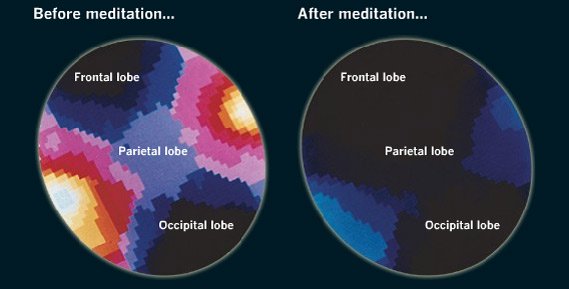“One conscious breathe in and out is a meditation.” Eckhart Tolle
Meditation is in vogue. There are many benefits attached to the Meditation. With the spread of Yoga through International Yoga Day, many more have started doing meditation. In his article “The Daily Habit Of These Outrageously Successful People”, the author found Meditation is the daily habit of these people.
First thing first. Let’s first try and understand what and how of Meditation before talking about the benefits. Different Gurus have different definitions of Meditation. In order to not get confused, let’s go by the Patanjali Yoga way of Meditation.
In the Yoga Sutras of Patanjali, Sage Patanjali has shown us eight stages of attaining Samadhi. Out of the eight 3rd and 4th stages i.e. Asana and Pranayama most of us are aware of. We will know more about the stages 6 and 7 today.
Dharana and Dhyana are stages 6 and 7 respectively, of Patanjali Yoga.
Dharna (Concentration) means fixing the consciousness on one point or region.
Dhyana (Meditation) means a steady, continues flow directed towards the same point or region. This is an art of reducing the interpretations of the mind and ultimately eliminating them completely.
Dharana is single pointed attention modifies into Dhyana by being sustained in time whilst dissolving its one pointed character implicit in the word concentration.
All the limbs of Patanjali Yoga sutras are interconnected. Through the practice of Yama and Niyama, the practitioner develops emotional stability and discipline, through Asana, he keeps body free from diseases (most of us start and end here), In Pranayama he learns to regulate energy with proper distribution throughout the body and mind, Through Pratyahara develops willpower and detaches himself from the organs of senses and acquire clarity of thought. Once he becomes indifferent to the worldly matters with the practice of Pratyahara, he is on his journey of inner quest. This happens with the practice of Dharana and Dhyana.
The following example will clarify further:
When one contemplates a diamond, one at first see with great clarity the gem itself (Dharana), Gradually one becomes aware of the light glowing from the center (Dynana). As the awareness of the light glows, awareness of the diamond as an object diminishes. Then there is only brightness, no source, no object. When the light is everywhere, that is Samadhi.
Having known what the Mediation is, now let the modern science takes over and tell us what happens to our body while we meditate.
A group of Harvard neuroscientists came together to study the benefits of meditation on the brain and how it affects mindfulness. Britta Hölzel, the lead author on the paper says, “It is fascinating to see the brain’s plasticity and that, by practicing meditation, we can play an active role in changing the brain and can increase our well-being and quality of life.”
One of the biggest things that happen to our brains when we meditate is that it stops processing so much information. Using Magnetic Resonance Imaging, (MRI) we can see how and where beta waves are decreasing the most. This is indicated by the color changes in the image below.

The following areas of the brain were affected by meditation in different ways.
Frontal lobe
This is the most highly evolved part of the brain, responsible for reasoning, planning, emotions and self-conscious awareness. During meditation, the frontal cortex tends to go offline.
Parietal lobe
This part of the brain processes sensory information about the surrounding world, orienting you in time and space. During meditation, activity in the parietal lobe slows down.
Thalamus
The gatekeeper for the senses, this organ focuses your attention by funneling some sensory data deeper into the brain and stopping other signals in their tracks. Meditation reduces the flow of incoming information to a trickle.
Reticular formation
As the brain’s sentry, this structure receives incoming stimuli and puts the brain on alert, ready to respond. Meditating dials back the arousal signal.
With meditation, the physiology also undergoes a change and every cell in the body is filled with more prana (energy).
All these studies and experiences of the partitioning sages suggest following benefits of Mediation at all levels.
- A calm mind
- Good concentration
- Better clarity
- Improved communication
- Relaxation and rejuvenation of the mind and body
- Lowers high blood pressure, reducing anxiety attacks
- Decreases any tension-related pain, such as, tension headaches, ulcers, insomnia, muscle and joint problems
- Improves the immune system
- Decreases Anxiety
- Improves Emotional stability
- Increases Creativity
- Gain clarity and peace of mind
- Meditation makes you aware – that your inner attitude determines your happiness.
- With the above benefits overall happiness increases
“When meditation is mastered, the mind is unwavering like the flame of a candle in a windless place”. Bhagavad Gita
The benefits of Meditation are immense. The fundamental question is:
Do we have the time to practice Mediation daily to avail these benefits?
Read next: 3 effects of Yoga-abhyas.
Sources:
Light on the Yoga Sutras of Patanjali, a book by BKS Iyengar
http://www.nmr.mgh.harvard.edu/~lazar/


